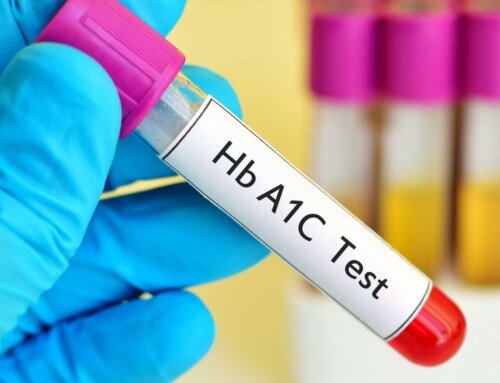According to Dr. Michael Goldberg, a diabetes aware dental specialist, “Gum disease can be made worse by diabetes and diabetes can make gum disease worse”. Inflammation of the gums will cause diabetes to spiral out of control, and out of control blood sugars will elevate the chance of severe periodontal disease.
Although people with diabetes are told to limit foods which turn to sugar (carbohydrates) and avoid all refined sugars, both acid and bacteria also play a role in dental problems and gum disease. Sugars do promote tooth decay, since they can change the make up of bacteria in the mouth. It also changes how your immune system may react. When eating refined, processed carbohydrates, we automatically increase the amount of mouth bacteria. The bacteria in the mouth produces acid after carbohydrates are processed, and the acid will cause tooth decay. It can be a combination of your own mouth’s bacteria called a micro biome. Food acid and acid from your own digestive system, as in gastric reflux, can also set you up for tooth decay. Diabetes, when uncontrolled, may thicken blood vessels – this can slow nutrients to the mouth and reduce waste product removal.
Gum (or periodontal) disease is a bacterial infection with high prevalence in people with diabetes. It presents as red, swollen and bleeding gums that pull away from the teeth. It can cause loose teeth and severe pain. Chronic inflammation from gum disease can cause insulin resistance and elevate blood sugars. As with other wounds, when blood sugars are out of control and white blood cells stop fighting, recovery slows and oral procedures including surgeries will not heal. Plaque is the build up of food, saliva and bacteria which form on the teeth after eating. If plaque is not removed immediately, it becomes tartar which is much more difficult to remove. Tartar gets under the gum line. Plaque and tartar cause inflammation and gum disease. Another common problem associated with gum disease and diabetes is dry mouth. When saliva is limited, as in dry mouth, there is less to buffer acids which can increase decay. Dry mouth leads to ulcers, soreness, infections and tooth decay. Keeping down the risk of gum problems should be a high priority, so let’s examine what can be done.
- The best way to prevent gum or periodontal disease is to control blood sugars by obtaining an A1C of 7% or less. The way to accomplish this is to incorporate a healthy lifestyle including daily exercise, 5-7% reduction in weight, a reasonable eating plan, and taking proper medications if needed. Most of these things are self-activated, except for medication choices and dosages. Find a health care provider who is well versed in diabetes medications since they change often. Make sure you are taking the medications correctly and as prescribed.
- Stop smoking: Smoking is dangerous for everyone, but the combination of diabetes and smoking dramatically increases periodontal disease. People who smoke and have diabetes are 20% more at risk for periodontal disease than people with diabetes who do not smoke. Smoking can cause bone, tooth and tissue loss as well. It can also cause growths or patches, including pre-cancer/cancers in the mouth.
- Watch out for thrush: People with diabetes often take antibiotics to fight off infections. Antibiotics can increase the risk of thrush, a fungal infection. Thrush really thrives when blood sugars are poorly controlled. It appears as white patches or spots. A burning tongue or mouth can indicate thrush as well. Taking probiotics or eating yogurt with active cultures can help. Talk to your physician about antibiotic use if you are prone to thrush.
- Brushing: The best time to brush teeth is 30 minutes after each meal when the enamel has re-mineralized. Foods that are high in acid including citrus, tomatoes, caffeine and carbonation can soften the tooth enamel and brushing immediately after eating can cause enamel loss. Use a soft bristle tooth brush or even better, use an electric one. Use gentle strokes at a 45 degree angle and get all open surfaces. Try to brush for 2-3 minutes. Use fluoride toothpastes which will also strengthen the enamel.
- Tongue scraper and flossing: Use a tongue scraper each morning before brushing and before bedtime. The base of the tongue is loaded with bacteria. It is best to floss before brushing to loosen the existing plaque. Flossing after each meal will help cut down on plaque and tartar formation.
- Water Pik: These are easy found at all drug and big box stores as well as online. Try to use one daily. They also loosen plaque and tartar to prevent bacteria formation. Dilute a solution of half-water and half-Listerine, which will cut down on bacteria for the remainder of the day.
- Mouth Rinses: These are good products – especially if you do not use a water pik. Look for alcohol-free rinses which will help kill the bad bacteria and preserve the good bacteria. Healthy mouth bacteria can reduce arterial plaque build up and decrease inflammation.
- Schedule 2 dental/periodontal visits, or as suggested by your provider. This helps you stay ahead and informed about the health of your mouth.
- Watch out for dental appliances: If you wear braces or other dental appliances with wires and brackets, watch out for cuts in your mouth and tongue. Carry and use wax to control rough edges and visit your provider when you have broken wires.
- Xylitol: This is a sugar alcohol that is often found in sugar-free gums, sugar-free hard candies and mints, as well as mouth rinses. Xylitol can change the bacteria in your mouth. It helps promote good bacteria and discourages bad bacteria from forming and congregating. It also increases saliva flow, decreases decay, and adds minerals to harden your teeth. If you can’t brush after a meal, try chewing sugar-free gum to help protect your mouth. There is now a patch that can stick to your gums and provide a slow release of Xylitol. Ask your diabetes-friendly dentist about this new addition.
- Dentures: Even if you have lost all your teeth due to gum disease, you need to be careful of ill-fitting dentures. They can cut your gums, which could lead to infections and soreness. If you lose or gain weight, make a follow up appointment to see if they still fit properly.
Having diabetes is hard enough but suffering from the possible mouth complications makes it tougher. Use these tips to avoid gum disease and tooth decay and enjoy a healthy mouth!
NOTE: Consult your Doctor first to make sure my recommendations fit your special health needs.







Leave A Comment